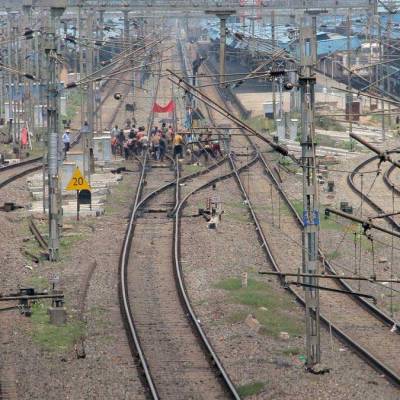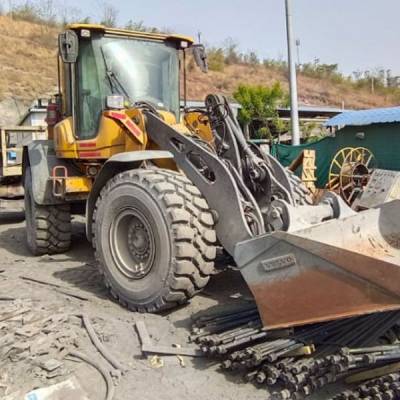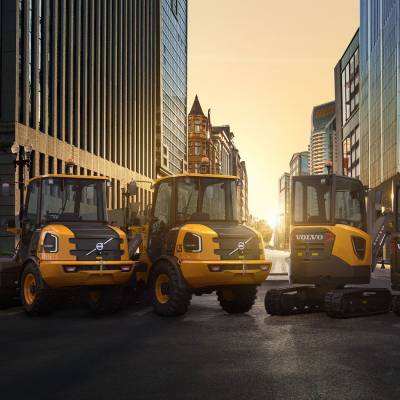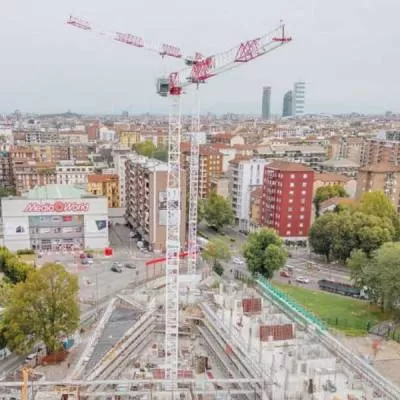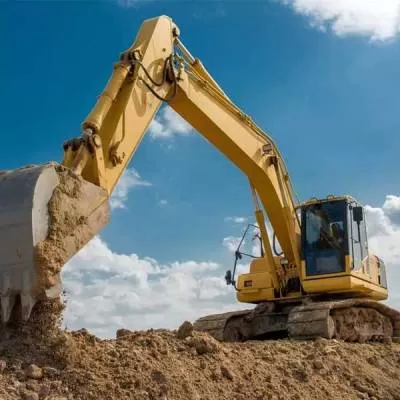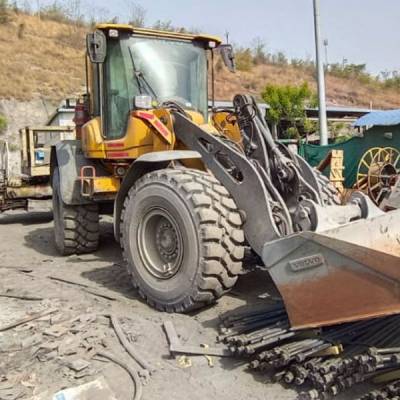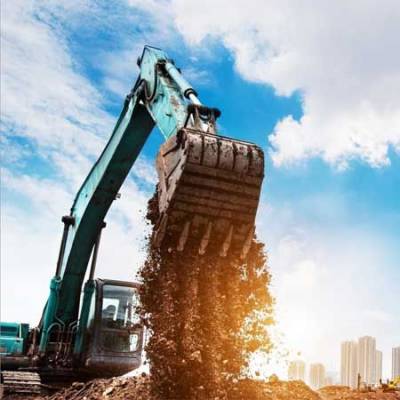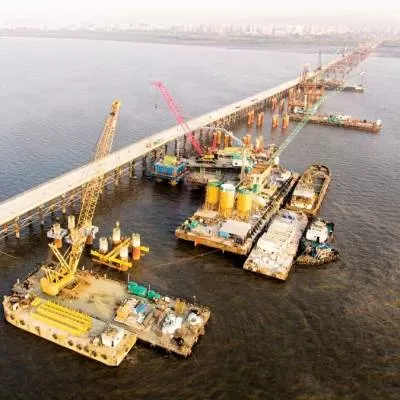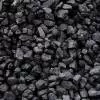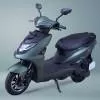
Earthmoving Equipment
The Indian construction equipment industry, currently worth $2.8 billion, is expected to grow to $5 billion by 2019-20, according to the Indian Construction Equipment Manufacturers' Association (ICEMA). About 53,000 pieces of construction equipment were sold in 2015-16, of which 36,000 units, roughly two-thirds, were earthmoving machines, informs Anand Sundaresan, Vice Chairman and Managing Director, Schwing Stetter (India) and President, ICEMA.
Key growth drivers
Indeed, earthmoving equipment is a growing segment. ¨Demand for earthmoving equipment in the last quarter of FY15-16 was quite significant; we expect demand to grow at 13 per cent YoY on a median level over the next few years,¨ said Sundaresan. ¨Among the major growth drivers are road projects and mining. In future, we expect railway and power projects to boost this industry.¨
¨Volvo CE sales in the first half of 2016 were up beyond 25 per cent compared to the previous year,¨ says Dimitrov Krishnan, Vice President and Head, Volvo CE. ¨We´re expecting something of a tail off in the second-half of the year to end with an overall sales increase of 25 per cent over the previous year.¨
¨Significant government initiatives have put construction on the recovery path after almost four years of sustained contraction,¨ says Jasmeet Singh, Head-Corporate Communications, JCB India. ¨Near 40 per cent growth between January and April 2016 over those months in 2015 is a sure sign of recovery. Old stuck projects are getting cleared; new announcements are being made, with roads and highways leading the resurgence.¨ Singh expects this lead to continue, with Rs 97,000 crore earmarked for roads, of which Rs 19,000 crore is for rural roads, and to see railways, irrigation, urban rejuvenation, ports and power drive growth in future. ¨Demand for SDLG wheel loaders is gradually growing in the mining industry; much of this demand is for coal mining where the loaders are used for wagon loading and truck loading,¨
says Sanu George, SDLG Business Head, India. ¨Road construction is booming and spurring demand from quarries actively supplying material for ongoing projects. In contrast, demand for coal re-handling operations in ports has been limited as has demand from general construction and associated quarries.¨
¨Green shoots started to emerge since H2 last year across various product lines in the earthmoving and overall construction equipment sector, with road construction leading the pack, as is typical of any major swing in infrastructure development,¨ affirms Abhijit Gupta, Brand Leader, CASE Construction Equipment India. ¨Eventually, this will translate into demand for equipment for secondary infrastructure development.
We expect 20-25 per cent volume growth annually.¨
#1 backhoe loader may yield to others
¨Q1 of FY16-17 is seeing substantial growth across the earthmoving segment compared to Q1 of the previous two years,¨ says Manoj Agarwal, Head-Sales & Marketing, Escorts Ltd Construction Equipment. ¨Roads and mining are propelling growth. With a good monsoon, we are optimistic about 20 per cent CAGR growth in the coming three years, though the type of products being used could change.¨ Within the earthmoving segment, Agarwal expects a shift in usage from backhoe loaders to excavators.
¨While backhoe loaders enjoy more than 40 per cent of demand now, broad-based growth is expected in future,¨ opines Sachin Nijhawan, Vice President and Business Head, Mahindra Construction Equipment, all because ¨modern and mechanised construction will be vital for the timely delivery of projects. The Make in India campaign and the smart city initiative have also opened massive opportunities. With investments in infrastructure and road building, projects like Bharat Mala, railways and smaller airports set to increase to 10 per cent of the GDP in the Twelfth Five-Year Plan, as against 7.6 per cent in the previous plan, sales are estimated to expand at a CAGR of 6.2 per cent.¨
George anticipates a shift in user preference from backhoe loaders to wheel loaders, driven by greater focus on machine productivity instead of all-round utility. ¨In the mining sector, this shift will be towards 5 tonne and above wheel loaders, whereas in general construction, the choice will be for wheel loaders below 3 tonne,¨ he says. ¨Though demand for 3 tonne machines is high in the utility sector, looking at the upcoming projects with stipulated time for completion, the trend may change from 3 tonne to 5 tonne wheel loaders as we are seeing demands in coal mining and port re-handling shifting towards the 5-tonne market.¨ To make the most of this potential trend, SDLG offers wheel loaders with advanced features like semi-automatic transmission, high torque at low RPM engine, Z bar linkage and load-sensing hydraulic system that eases operation with high productivity and low fuel consumption.
New rent-a-machine options
India´s rental market is currently localised, unstructured and populated by many unorganised players, says Singh, who expects contractors to favour renting in the present growth environment, primarily driven by roads and highways, which will increase the utilisation of existing machines.
Krishnan expects rental activity to increase in the next six months. Greater interest in renting reflects the maturing of the Indian equipment market,¨ he reasons. ¨Our feeling is that the development of this segment will be steady rather than stratospheric.¨
¨We´ve seen a recent project-based surge in demand of construction equipment but buyers are moving cautiously, with some reluctance to financially commit to purchasing a new asset, at least in the short to medium term,¨ elaborates Gupta. ¨Scepticism about the sustainability of the growth wave has led to a spike in demand for machines on rent, which has in turn pushed up the hourly rates as well as demand for used equipment.¨
All round growth will improve the utilisation of existing equipment fleets, thereby leading to higher after-sales and rental business, according to Nijhawan. Mahindra Construction Equipment is set to cater to this need, with a special business model in place to provide hassle-free, single-window organised rental services through over 50 channel partners across the country. That´s what you call being well-equipped!
- Demand to grow at 13 per cent YoY on median level over the next few years.
- Shift expected in usage from backhoe loaders to excavators and wheel loaders.
- All round growth to improve the utilisation of existing equipment fleets, leading to higher after-sales and rental business.
Buying an earthmoving machine? Consider cost, engine capacity and torque
¨We compare the engine capacity and torque of potential buys because these two features promise higher digging force and, therefore, higher productivity, says Vidhushekhar, Purchase Manager, Valecha Engineering. ¨Higher torque is helpful for loading, dozing and levelling applications. We also look at maintenance and operational costs. Value-add upmarket electronic alerts sharing machine data, usage data, and even the possibility of alerts on fuel pilferage also attracted us.¨
Buying an earthmoving machine?Consider stability, fuel consumption
¨Above all, we look for machine stability with good frame design,¨ says Sanjeev Gupta, General Manager-Plant & Machinery, Continental Engineering Corporation. ¨Many manufacturers of earthmoving machines in India supply products with a very light basic frame or chassis. They largely cater to the highly price conscious Indian buyer or user, but the lightness means the manufacturer has cut corners on the basic material cost. Over the years, such lightweight machines crack and develop defects that are normally beyond economical repair. For us, lightweight machines are unstable and unsafe. Machines made by Caterpillar, Leibherr or Leeboy are usually well-designed and efficient. We also prioritise operator safety features and add-ons that protect nearby equipment. In productivity, we evaluate fuel consumption.¨
Plenty of avenues to skill operators
Various initiatives exist for companies to enhance operator skills. ICEMA has promoted the Infrastructure Equipment Skill Council (IESC), an NSDC-approved skill council to train construction and earthmoving equipment operators. ¨We spent the first year identifying equipment we would focus on, creating occupational standards and a syllabus with the help of manufacturers, and getting NSDC approval,¨ says Anand Sundaresan, Vice Chairman and Managing Director, Schwing Stetter (India) and President, ICEMA. ¨Training started six months ago in 20 accredited training centres. Over 100 trainers have so far certified more than 1,000 operators. We expect the training pace to pick up now and are targeting training about 2 million operators in the next six to seven years.¨
Case Construction India has opened five regional training centres across the country for professional skill development training of operators and technicians. Many Case dealers in rural and semi-urban India are supporting this initiative at the local level with support from Case India.
Volvo CE runs a high-profile Operator Champion India event to highlight the importance of machine operators. This is a nationwide search to find the country´s leading operator, run educational and practical sessions to improve operator skills and attract people to a career in equipment operation. ¨Volvo also offers operation and maintenance training for free at our Bengaluru facility (operators need only pay for travel and stay),¨ says Dimitrov Krishnan, Vice President and Head, Volvo CE. ¨We entertain requests from companies for training programmes, which are usually three to seven days long.¨
JCB has 14 operator training centres across India offering a one-month course on how to safely and productively operate a JCB machine. A few of these centres are accredited under the government´s Pradhan Mantri Kaushal Vikas Yojna. ¨Of late, we have tied-up with the Infrastructure Equipment Skill Council (IESC), so many of our centres are fully aligned with the council´s guidelines. We have trained about 24,000 people on our machines so far,¨ says Jasmeet Singh, Head-Corporate Communications, JCB India. ¨We also offer ITIs and diploma graduates a 16-week detailed induction programme at our welding training school in our Jaipur factory complex.¨ It focuses on core skills like welding and laser cutting, along with soft skills training.
And, Escorts offers one-month courses for backhoe loader operators, crane operators and fork lift operators at six centres across India, through Escorts Skill Development, a not-for-profit accredited with the IESC.
- Charu Bahri
- Indian Construction Equipment Manufacturers Association
- ICEMA
- Anand Sundaresan
- Schwing Stetter (India)
- Volvo CE
- Dimitrov Krishnan
- Jasmeet Singh
- JCB India
- Sanu George
- SDLG
- Abhijit Gupta
- CASE Construction Equipment India
- Manoj Agarwal
- Escorts Ltd
- Sachin Nijhawan
- Mahindra Construction Equipment
- Infrastructure
- Road Building
- Bharat Mala
- Railways
- Vidhushekhar
- Valecha Engineering
- Mahindra EarthMaster
- JCB Backhoe Loaders
- Sanjeev Gupta
- Continental Engineering Corporation
- Caterpillar
- Leibherr
- Leeboy
- ICEMA
- Infrastructure Equipment Skill Council
- IESC
- Anand Sundaresan
- Pradhan Mantri Kaushal Vikas Yojna
Demand for earthmoving machines is poised to grow and shift from backhoe loaders toward new bestsellers. The Indian construction equipment industry, currently worth $2.8 billion, is expected to grow to $5 billion by 2019-20, according to the Indian Construction Equipment Manufacturers' Association (ICEMA). About 53,000 pieces of construction equipment were sold in 2015-16, of which 36,000 units, roughly two-thirds, were earthmoving machines, informs Anand Sundaresan, Vice Chairman and Managing Director, Schwing Stetter (India) and President, ICEMA. Key growth drivers Indeed, earthmoving equipment is a growing segment. ¨Demand for earthmoving equipment in the last quarter of FY15-16 was quite significant; we expect demand to grow at 13 per cent YoY on a median level over the next few years,¨ said Sundaresan. ¨Among the major growth drivers are road projects and mining. In future, we expect railway and power projects to boost this industry.¨ ¨Volvo CE sales in the first half of 2016 were up beyond 25 per cent compared to the previous year,¨ says Dimitrov Krishnan, Vice President and Head, Volvo CE. ¨We´re expecting something of a tail off in the second-half of the year to end with an overall sales increase of 25 per cent over the previous year.¨ ¨Significant government initiatives have put construction on the recovery path after almost four years of sustained contraction,¨ says Jasmeet Singh, Head-Corporate Communications, JCB India. ¨Near 40 per cent growth between January and April 2016 over those months in 2015 is a sure sign of recovery. Old stuck projects are getting cleared; new announcements are being made, with roads and highways leading the resurgence.¨ Singh expects this lead to continue, with Rs 97,000 crore earmarked for roads, of which Rs 19,000 crore is for rural roads, and to see railways, irrigation, urban rejuvenation, ports and power drive growth in future. ¨Demand for SDLG wheel loaders is gradually growing in the mining industry; much of this demand is for coal mining where the loaders are used for wagon loading and truck loading,¨ says Sanu George, SDLG Business Head, India. ¨Road construction is booming and spurring demand from quarries actively supplying material for ongoing projects. In contrast, demand for coal re-handling operations in ports has been limited as has demand from general construction and associated quarries.¨ ¨Green shoots started to emerge since H2 last year across various product lines in the earthmoving and overall construction equipment sector, with road construction leading the pack, as is typical of any major swing in infrastructure development,¨ affirms Abhijit Gupta, Brand Leader, CASE Construction Equipment India. ¨Eventually, this will translate into demand for equipment for secondary infrastructure development. We expect 20-25 per cent volume growth annually.¨ #1 backhoe loader may yield to others ¨Q1 of FY16-17 is seeing substantial growth across the earthmoving segment compared to Q1 of the previous two years,¨ says Manoj Agarwal, Head-Sales & Marketing, Escorts Ltd Construction Equipment. ¨Roads and mining are propelling growth. With a good monsoon, we are optimistic about 20 per cent CAGR growth in the coming three years, though the type of products being used could change.¨ Within the earthmoving segment, Agarwal expects a shift in usage from backhoe loaders to excavators. ¨While backhoe loaders enjoy more than 40 per cent of demand now, broad-based growth is expected in future,¨ opines Sachin Nijhawan, Vice President and Business Head, Mahindra Construction Equipment, all because ¨modern and mechanised construction will be vital for the timely delivery of projects. The Make in India campaign and the smart city initiative have also opened massive opportunities. With investments in infrastructure and road building, projects like Bharat Mala, railways and smaller airports set to increase to 10 per cent of the GDP in the Twelfth Five-Year Plan, as against 7.6 per cent in the previous plan, sales are estimated to expand at a CAGR of 6.2 per cent.¨ George anticipates a shift in user preference from backhoe loaders to wheel loaders, driven by greater focus on machine productivity instead of all-round utility. ¨In the mining sector, this shift will be towards 5 tonne and above wheel loaders, whereas in general construction, the choice will be for wheel loaders below 3 tonne,¨ he says. ¨Though demand for 3 tonne machines is high in the utility sector, looking at the upcoming projects with stipulated time for completion, the trend may change from 3 tonne to 5 tonne wheel loaders as we are seeing demands in coal mining and port re-handling shifting towards the 5-tonne market.¨ To make the most of this potential trend, SDLG offers wheel loaders with advanced features like semi-automatic transmission, high torque at low RPM engine, Z bar linkage and load-sensing hydraulic system that eases operation with high productivity and low fuel consumption. New rent-a-machine options India´s rental market is currently localised, unstructured and populated by many unorganised players, says Singh, who expects contractors to favour renting in the present growth environment, primarily driven by roads and highways, which will increase the utilisation of existing machines. Krishnan expects rental activity to increase in the next six months. Greater interest in renting reflects the maturing of the Indian equipment market,¨ he reasons. ¨Our feeling is that the development of this segment will be steady rather than stratospheric.¨ ¨We´ve seen a recent project-based surge in demand of construction equipment but buyers are moving cautiously, with some reluctance to financially commit to purchasing a new asset, at least in the short to medium term,¨ elaborates Gupta. ¨Scepticism about the sustainability of the growth wave has led to a spike in demand for machines on rent, which has in turn pushed up the hourly rates as well as demand for used equipment.¨ All round growth will improve the utilisation of existing equipment fleets, thereby leading to higher after-sales and rental business, according to Nijhawan. Mahindra Construction Equipment is set to cater to this need, with a special business model in place to provide hassle-free, single-window organised rental services through over 50 channel partners across the country. That´s what you call being well-equipped! Demand to grow at 13 per cent YoY on median level over the next few years. Shift expected in usage from backhoe loaders to excavators and wheel loaders. All round growth to improve the utilisation of existing equipment fleets, leading to higher after-sales and rental business. Buying an earthmoving machine? Consider cost, engine capacity and torque ¨We compare the engine capacity and torque of potential buys because these two features promise higher digging force and, therefore, higher productivity, says Vidhushekhar, Purchase Manager, Valecha Engineering. ¨Higher torque is helpful for loading, dozing and levelling applications. We also look at maintenance and operational costs. Value-add upmarket electronic alerts sharing machine data, usage data, and even the possibility of alerts on fuel pilferage also attracted us.¨ Buying an earthmoving machine?Consider stability, fuel consumption ¨Above all, we look for machine stability with good frame design,¨ says Sanjeev Gupta, General Manager-Plant & Machinery, Continental Engineering Corporation. ¨Many manufacturers of earthmoving machines in India supply products with a very light basic frame or chassis. They largely cater to the highly price conscious Indian buyer or user, but the lightness means the manufacturer has cut corners on the basic material cost. Over the years, such lightweight machines crack and develop defects that are normally beyond economical repair. For us, lightweight machines are unstable and unsafe. Machines made by Caterpillar, Leibherr or Leeboy are usually well-designed and efficient. We also prioritise operator safety features and add-ons that protect nearby equipment. In productivity, we evaluate fuel consumption.¨ Plenty of avenues to skill operators Various initiatives exist for companies to enhance operator skills. ICEMA has promoted the Infrastructure Equipment Skill Council (IESC), an NSDC-approved skill council to train construction and earthmoving equipment operators. ¨We spent the first year identifying equipment we would focus on, creating occupational standards and a syllabus with the help of manufacturers, and getting NSDC approval,¨ says Anand Sundaresan, Vice Chairman and Managing Director, Schwing Stetter (India) and President, ICEMA. ¨Training started six months ago in 20 accredited training centres. Over 100 trainers have so far certified more than 1,000 operators. We expect the training pace to pick up now and are targeting training about 2 million operators in the next six to seven years.¨ Case Construction India has opened five regional training centres across the country for professional skill development training of operators and technicians. Many Case dealers in rural and semi-urban India are supporting this initiative at the local level with support from Case India. Volvo CE runs a high-profile Operator Champion India event to highlight the importance of machine operators. This is a nationwide search to find the country´s leading operator, run educational and practical sessions to improve operator skills and attract people to a career in equipment operation. ¨Volvo also offers operation and maintenance training for free at our Bengaluru facility (operators need only pay for travel and stay),¨ says Dimitrov Krishnan, Vice President and Head, Volvo CE. ¨We entertain requests from companies for training programmes, which are usually three to seven days long.¨ JCB has 14 operator training centres across India offering a one-month course on how to safely and productively operate a JCB machine. A few of these centres are accredited under the government´s Pradhan Mantri Kaushal Vikas Yojna. ¨Of late, we have tied-up with the Infrastructure Equipment Skill Council (IESC), so many of our centres are fully aligned with the council´s guidelines. We have trained about 24,000 people on our machines so far,¨ says Jasmeet Singh, Head-Corporate Communications, JCB India. ¨We also offer ITIs and diploma graduates a 16-week detailed induction programme at our welding training school in our Jaipur factory complex.¨ It focuses on core skills like welding and laser cutting, along with soft skills training. And, Escorts offers one-month courses for backhoe loader operators, crane operators and fork lift operators at six centres across India, through Escorts Skill Development, a not-for-profit accredited with the IESC. - Charu Bahri


